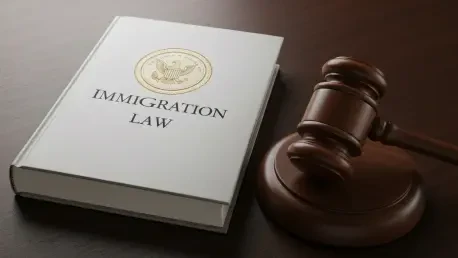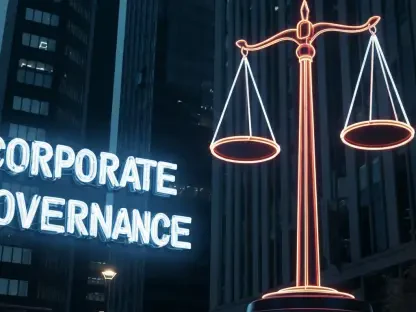In a nation where trust in law enforcement often hangs by a thread, a striking conflict has emerged between state and federal powers over the visibility of those wielding authority. Picture a community rattled by immigration raids, where masked figures in unmarked vehicles sweep through neighborhoods, leaving residents unsure if they’re facing legitimate officers or dangerous impostors. This scenario, unfolding in California, has sparked a heated legal battle with the Trump Administration over state laws demanding that federal agents reveal their identities during operations. This roundup article dives into diverse perspectives from lawmakers, legal experts, and community advocates to explore whether states can enforce such transparency on federal agents, examining the clash of public safety, trust, and governmental authority at stake.
Voices of Conflict: State Transparency vs. Federal Autonomy
California’s Stand for Visible Accountability
California’s recent legislation, Senate Bill 627 (No Secret Police Act) and Senate Bill 805 (No Vigilantes Act), signed into law in 2025, mandates that law enforcement, including federal agents, display clear identification such as badge numbers or agency affiliation during operations. State lawmakers argue this is a critical step toward rebuilding public confidence, especially after incidents of unidentified federal officers conducting immigration sweeps in plain clothes. The intent is clear: to ensure residents can distinguish legitimate authority from potential criminals exploiting anonymity.
Supporters of these laws highlight a pressing need for clarity in interactions with law enforcement. Reports of impersonators posing as federal agents to commit crimes have fueled the push for transparency, with state officials emphasizing that visible identification protects both communities and officers. This perspective frames the legislation as a safeguard against fear and confusion in vulnerable neighborhoods often targeted by federal actions.
A counterpoint within California’s discourse acknowledges the challenge of jurisdiction. Some legal analysts caution that while the intent behind these bills resonates with public sentiment, attempting to regulate federal agents may overstep state authority. This tension sets the stage for a broader debate on whether state-driven transparency can coexist with national security priorities.
Federal Pushback on Grounds of Safety and Supremacy
On the opposing side, the Trump Administration has filed a lawsuit in federal court in Los Angeles, asserting that California’s laws infringe on the Constitution’s Supremacy Clause by interfering with federal operations. Federal representatives argue that mandating identification jeopardizes agent safety, particularly in high-risk missions where anonymity is a shield against retaliation. The stance is that operational effectiveness must trump state-level demands for visibility.
Legal experts aligned with the federal position stress the importance of autonomy in national law enforcement. They point out that federal agents often work under unique constraints, where revealing identities could compromise ongoing investigations or endanger personnel. This viewpoint underscores a belief that state interference in such matters disrupts a carefully balanced system of federal authority.
However, some critics of the federal argument suggest that the safety concern, while valid, does not fully address the erosion of public trust caused by faceless enforcement. They argue that the government’s resistance to identification requirements appears inconsistent, especially given internal warnings about impersonation risks. This discrepancy fuels skepticism about whether secrecy truly serves security or merely shields accountability.
Community Advocates Weigh In on Trust and Fear
Community voices add a human dimension to this legal standoff, emphasizing the real-world impact of unidentified law enforcement. Advocacy groups in California argue that the presence of masked federal agents during immigration raids has sown deep fear and mistrust, particularly in immigrant-heavy areas. They support state laws as a means to restore a sense of safety, asserting that transparency is a cornerstone of legitimate authority.
These advocates also draw attention to documented cases where anonymity has enabled abuse or exploitation by those posing as officers. Their perspective is grounded in the lived experiences of residents who feel targeted yet unprotected, pushing for policies that prioritize community well-being over operational secrecy. This angle highlights a demand for law enforcement to be visibly accountable to the people they serve.
A contrasting opinion from some community leaders acknowledges the complexity of balancing transparency with officer protection. While sympathetic to state efforts, they caution that overly rigid identification rules might deter federal cooperation in local crime-fighting initiatives. This nuanced take suggests a need for compromise rather than an all-or-nothing approach to the issue.
Legal and Social Implications from Varied Lenses
State-Federal Power Dynamics Under Scrutiny
Legal scholars offer insights into how this dispute mirrors a larger struggle over the boundaries of state and federal power. Many note that California’s progressive push for law enforcement transparency reflects a growing trend among states to assert control over public safety within their borders. This perspective sees the conflict as a test case for how far states can go in regulating federal actions without violating constitutional principles.
Another layer of analysis focuses on the potential ripple effects of a court ruling. Experts suggest that a decision favoring California could embolden other states to enact similar laws, reshaping the landscape of law enforcement interactions nationwide. Conversely, a federal victory might reinforce the notion that national authority supersedes state oversight, potentially limiting local efforts to demand accountability.
A third viewpoint considers the historical context of such tensions, pointing out that clashes over jurisdiction often intensify during politically charged times. Analysts argue that the current debate, tied to immigration enforcement under the Trump Administration, is less about identification alone and more about deeper ideological divides on governance and civil rights. This broader framing situates the issue within a long-standing tug-of-war over power distribution.
Public Safety and Operational Needs: Finding Common Ground?
Policy advisors and think tanks contribute ideas on balancing public safety with federal operational needs. Some propose that dialogue between state and federal officials could lead to tailored exemptions in legislation, allowing anonymity in specific, high-risk scenarios while maintaining general transparency. This pragmatic approach seeks to address both sides’ core concerns without resorting to all-out legal battles.
Others in the policy sphere advocate for federal guidelines that encourage voluntary identification when safety permits, reducing the need for state mandates. They argue that fostering trust through proactive measures could mitigate community fears while preserving essential secrecy for sensitive missions. This suggestion aims to shift the conversation from conflict to collaboration.
A differing opinion warns against compromise that dilutes state authority, insisting that public safety hinges on consistent, enforceable standards for all law enforcement, federal or otherwise. This stance prioritizes local control as a non-negotiable element of democratic governance, viewing federal resistance as a threat to community-driven accountability. The diversity of these insights underscores the complexity of finding a unified path forward.
Reflecting on a Polarized Debate
Looking back, the roundup of perspectives on whether states can force federal agents to reveal their identities reveals a deeply divided landscape. California’s push for transparency through laws like SB 627 and SB 805 clashes sharply with the Trump Administration’s defense of federal autonomy and agent safety. Community advocates amplify the call for trust and accountability, while legal and policy experts grapple with the constitutional and practical challenges of bridging state and federal priorities.
Moving forward, a constructive next step could involve structured negotiations to craft hybrid policies that address both transparency and security. Stakeholders might consider pilot programs in select regions to test identification protocols, gathering data on their impact on public trust and operational outcomes. Additionally, staying informed about court rulings in this case will be crucial, as the precedent set could redefine state-federal relations for years to come. Exploring resources on law enforcement accountability and constitutional law offers a deeper understanding of how to advocate for balanced solutions in local communities.









